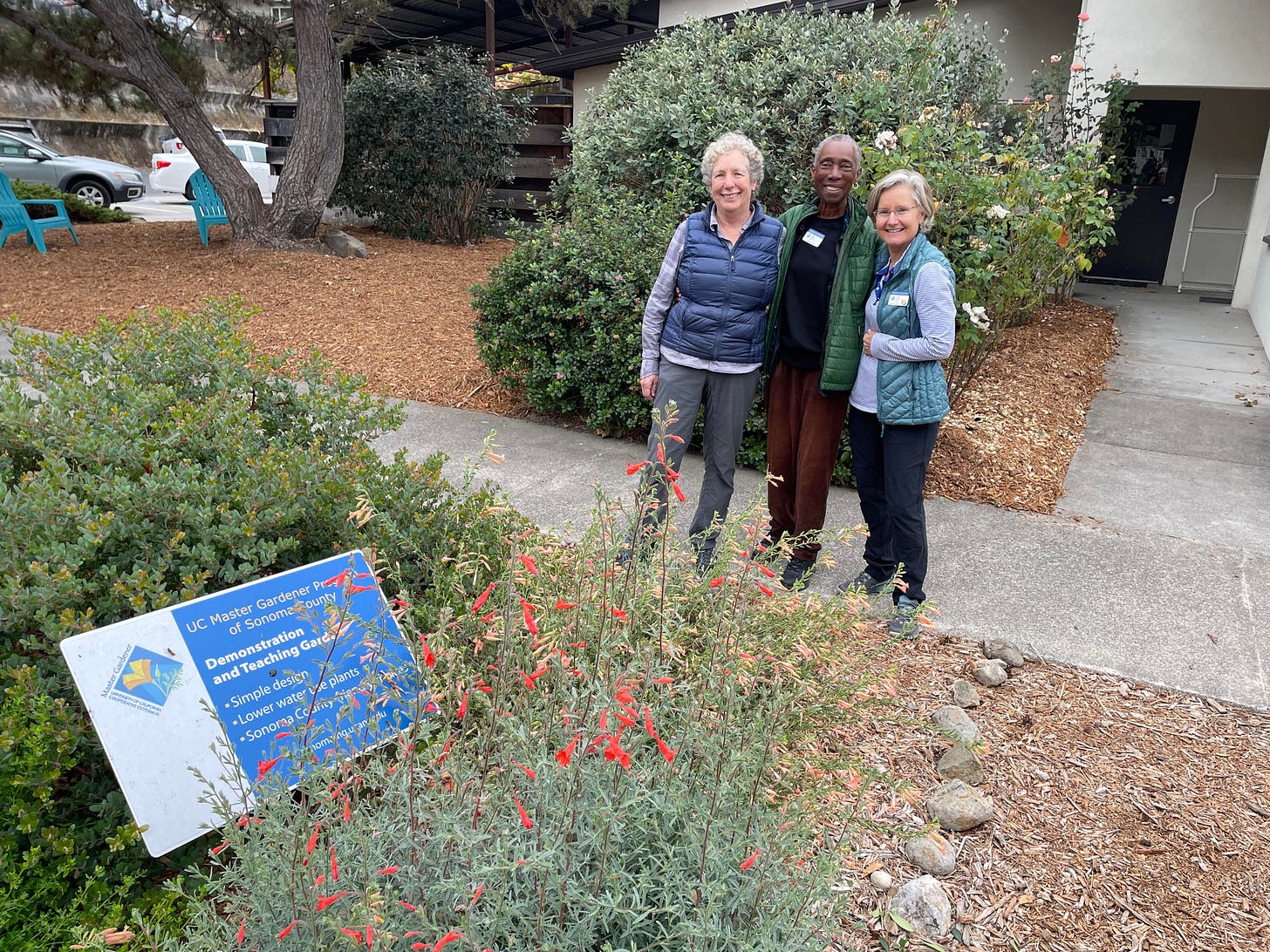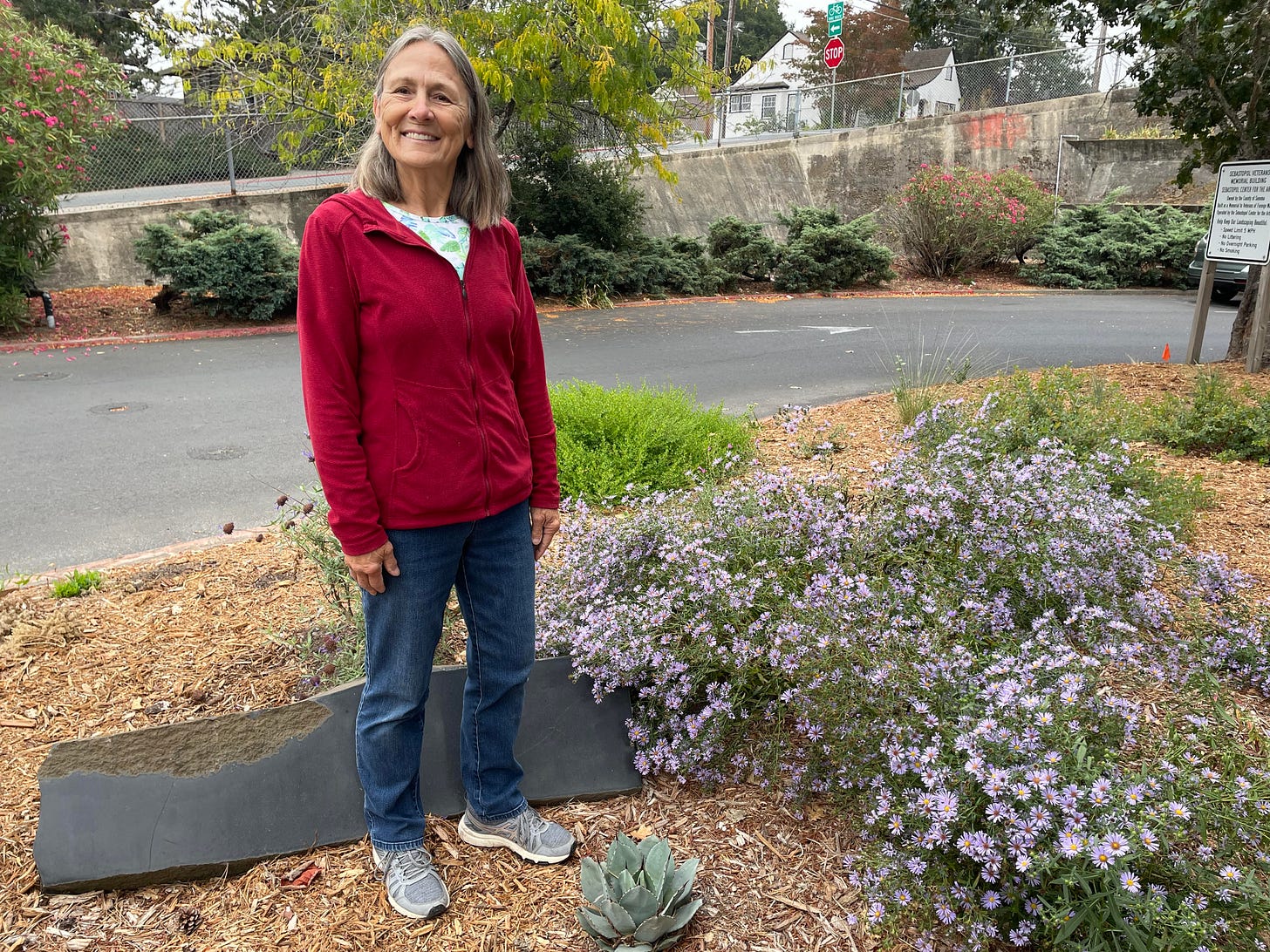Let the land speak its native tongue
UC Master Gardeners have created a Native Plant Demonstration Garden at Sebastopol Center for the Arts

Want to take your landscaping in a more native direction, but don’t know where to start? Take a stroll over to the Native Plant Demonstration Garden, which was created by UC Master Gardeners of Sonoma County at Sebastopol Center for the Arts.
“We have a couple of Master Gardeners who are also board members at the art center, so they thought, gosh, maybe the Master Gardeners could get involved and do something here,” said Tami Stolte, one of the co-directors of the project.
“The Master Gardeners’ mission is educating home gardeners about sustainable gardening, specifically in Sonoma County,” she said. “The purpose of a demonstration garden is to show home gardeners some ideas about what they might be able to do and how to do it in a sustainable, firewise, waterwise way. All of these plants here—and most of them are native—are suitable for a home garden.”
Stolte’s co-director, Diane Ryan, explained the importance of using native plants in home gardens.
“Native plants attract our local pollinators. They help to feed our local pollinators,” Ryan said. “They're drought-resistant, and they’re under appreciated. Because, just look at these, they're so beautiful. People don't appreciate how well natives can survive in home gardens, and that's one of the things we want to teach people.”

Stolte said this isn’t the first native plant garden at the art center. Several years ago, the Habitat Corridor Project planted a pollinator garden.
“Their idea was to attract pollinators—insects and birds—by select plantings, and so we've tried to extend that.”
She said they were able to incorporate some of the plants from the earlier garden.
The Master Gardeners began work on their plot in front of SebARTS last November.
“The very first thing we did was clean out the existing plantings that weren't viable anymore—a lot of dead and dying things that were at the end of their lifecycle. And of course, the weeds. So we cleared it out and then we put cardboard down. We collected recycled cardboard from different places and laid down a really thick layer and then the mulch on top, and then irrigation, then more mulch, and then we planted.”
They just installed the plant identification tags in the demonstration garden last week.
Stolte said that right now—October and November—is a great time to plant native plants in your garden.
“The best time to do it is the fall,” she said. “That way the plants can get watered by the rain over the winter.”
She noted that new plants—even new native plants—need irrigation to get started, however.
“Most natives are drought tolerant because they're adapted to live in this long drought season that we have,” Stolte said. “Typically our summers are dry, so the first year the new plantings have been watered, but we expect to be able to turn the water off or way down by next season.”

